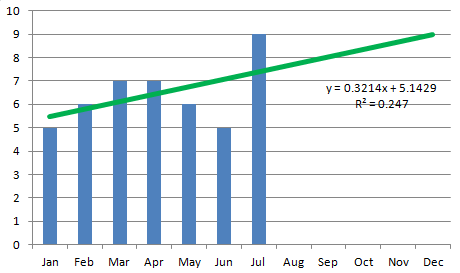

VAR FirstDateInPeriod = MINX ( Period, 'Date' )

Once the time period is computed, we only need to extend the current filter context with the period and to compute the monthly average of sales: This is accomplished by the following portion of the complete formula:ĭATESINPERIOD ( 'Date', LastCurrentDate, - NumOfMonths, MONTH ) By using DATESINPERIOD, we first compute the requested period. Therefore, if we’re going back one year for example the period starts from the end of the selected month and contains the previous 12 months, including the selected month. The selected month is included in the calculation. In the chart, each point represents a month. The period definition requires two arguments to express for example “12 days” or “1 year”: a number and a unit of measure. The period definition: it can be days, quarters, months, or years.The reference date value, which is the starting point to determine the period.The Date column reference, to determine which column to return in the result.There are three arguments of DATESINPERIOD: DATESINPERIOD returns a table with dates, starting from a given date and going down or up the desired period. Implementing a rolling average as a DAX measureĭATESINPERIOD is a DAX function designed for this goal.

#Excel trendline mismatch trend function how to#
In the second part, we show how to implement a calculation group that can apply a rolling average to any existing measure. The first part of the article shows the solution implemented in a regular measure. We use CALCULATE to extend the filter context to include the desired time period. To compute the rolling average, we must compute Sales Amount over the last 12 months instead of the single month selected in the filter context. When you project the rolling average on a chart, the resulting line is much smoother it removes the spikes and drops that would make it difficult to recognize a trend in sales. In the first example, the line graph had only one data series, but the following column chart has two.The measure we want to compute is Rolling Avg 12M, which computes the rolling average of the Sales Amount measure over the last 12 months. We’ll explore more of these later in this article.Ĭhoose the trendline you want to use from the list, and it will be added to your chart. The Format Trendline pane opens and presents all trendline types and further options.
#Excel trendline mismatch trend function full#
To see the full complement of options, click “More Options.” It uses a specified number of data points (two is the default), averages them, and then uses this value as a point in the trendline.

The line is more curved than a linear trendline.


 0 kommentar(er)
0 kommentar(er)
